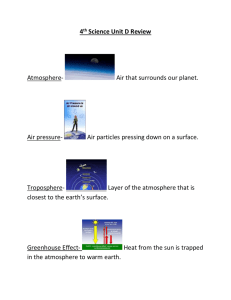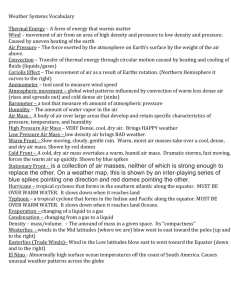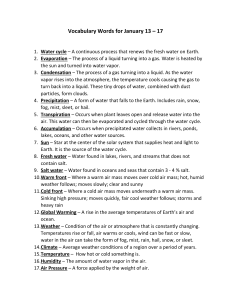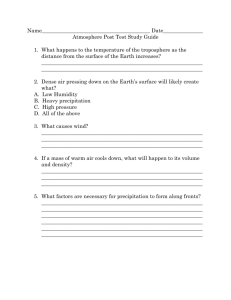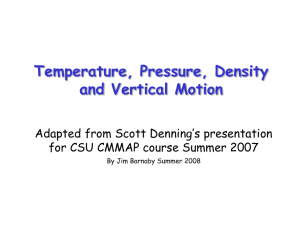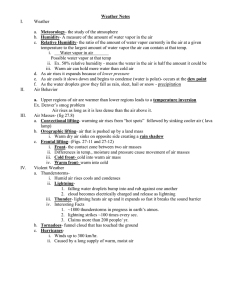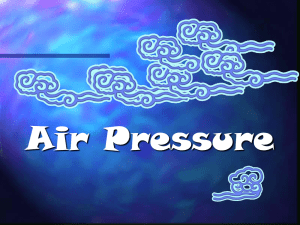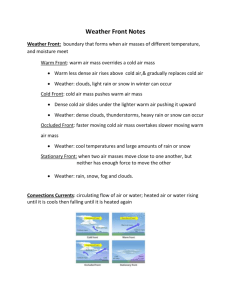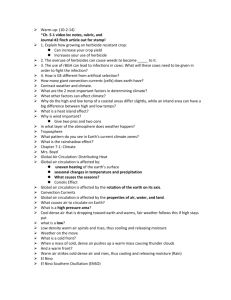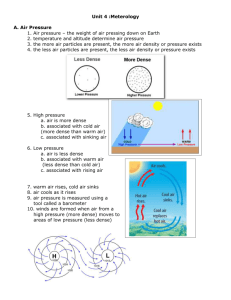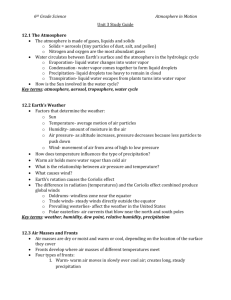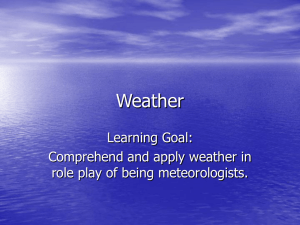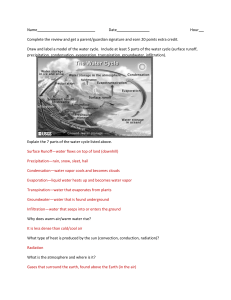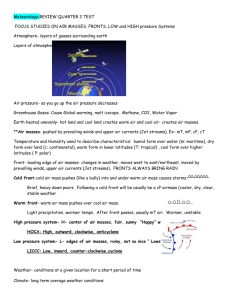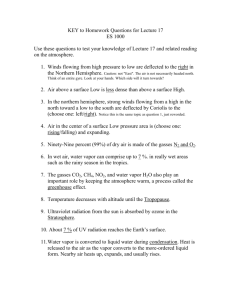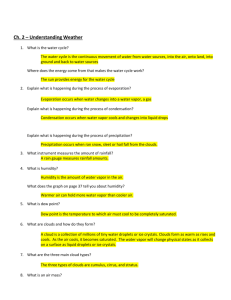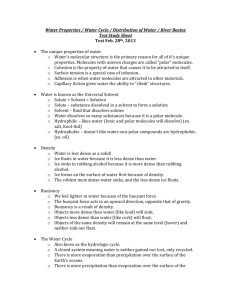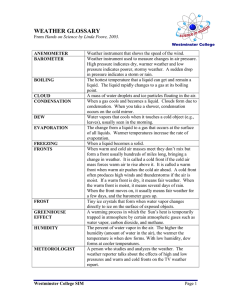Weather IN SUMMARY
advertisement
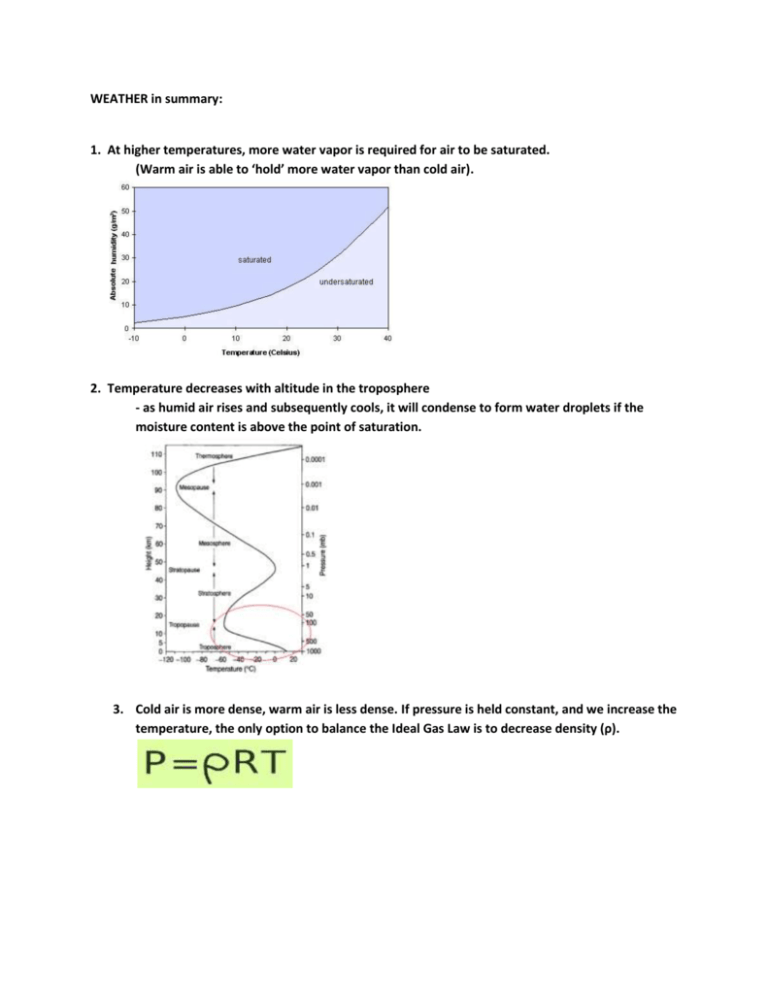
WEATHER in summary: 1. At higher temperatures, more water vapor is required for air to be saturated. (Warm air is able to ‘hold’ more water vapor than cold air). 2. Temperature decreases with altitude in the troposphere - as humid air rises and subsequently cools, it will condense to form water droplets if the moisture content is above the point of saturation. 3. Cold air is more dense, warm air is less dense. If pressure is held constant, and we increase the temperature, the only option to balance the Ideal Gas Law is to decrease density (ρ). 4. After a cold front passes, we expect good weather (higher pressure from the cold, dense air mass). 4. High pressure systems associated with good (happy) weather because cooler (possibly drier) air from above is descending. Blue skies smiling on me… 5. Low pressure systems associated with bad (lousy) weather because the warm, moist air is rising – allowing water vapor to condense. Raindrops keep falling on my head… 6. Coriolis deflects air parcels to the right as they cross the pressure gradient (in the North Hemisphere). This creates cyclonic (counterclockwise) movement around low pressure systems.

